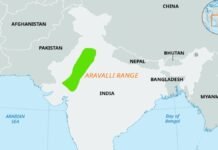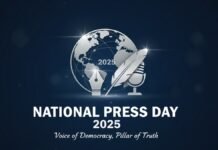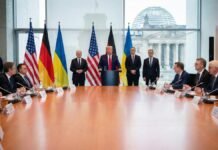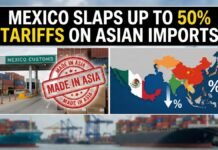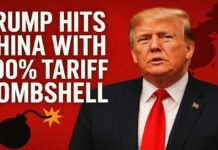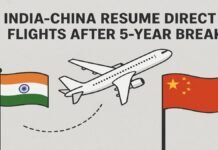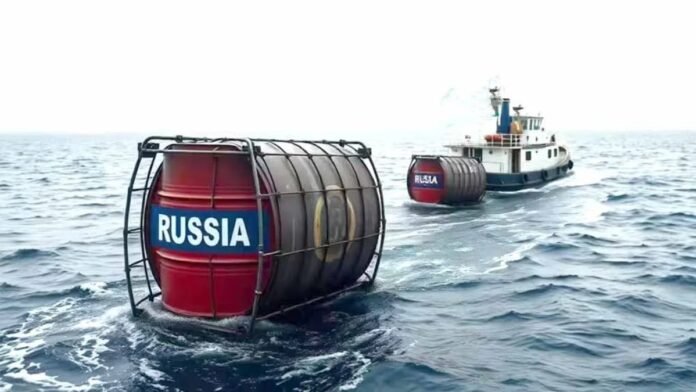
Key Points
- NATO Secretary General Mark Rutte warns India, China, and Brazil of 100% secondary sanctions if they continue trading with Russia, especially in oil and gas sectors.
- Rutte urges these nations to press Russian President Vladimir Putin for serious Ukraine peace talks, warning that sanctions could “hit very hard” if ignored.
- US President Donald Trump gives Russia a 50-day ultimatum for a peace deal, threatening 100% secondary tariffs on countries buying Russian exports if there’s no progress.
- US Senate bill proposes tariffs up to 500% on nations trading with Russia, intensifying diplomatic and economic pressure.
- India and China remain Russia’s top oil customers, collectively accounting for 85% of its crude exports in 2025.
New Delhi: NATO Secretary General Mark Rutte, during a high-level meeting with US senators in Washington, delivered a direct and forceful warning to the governments of India, China, and Brazil: if these nations keep trading with Russia particularly in oil and gas they could soon be hit with punitive “100% secondary sanctions” that would severely impact their economies.
Rutte’s call comes amid mounting efforts by the West to isolate Russia over its invasion of Ukraine. He emphasized the seriousness of the situation:
“If you live now in Beijing, or in Delhi, or you are the president of Brazil, you might want to take a look into this, because this might hit you very hard. Please, make the phone call to Vladimir Putin and tell him he has to get serious about peace talks, or this will slam back on Brazil, India, and China in a massive way.”
50 Days to Ukraine Peace or Face “Massive” Sanctions
US President Donald Trump, fresh from announcing a new weapons package for Ukraine, upped the pressure by setting a 50-day deadline:
- If Moscow doesn’t agree to peace talks within this timeframe, countries buying Russian exports including oil will face “biting” 100% tariffs and secondary sanctions.
- A bipartisan Senate bill could authorize tariffs as high as 500% on imports from countries trading with Russia, aiming to crush Moscow’s war economy and deter businesses globally.
These extraordinary measures arrive on top of existing sanctions by the US and EU that have already hit Russian exports and finances hard, especially in the energy sector.
India, China, and Brazil: Between Oil Deals and Sanction Risks
Despite relentless Western pressure, India, China, and Brazil have continued robust trade relations with Russia, sourcing large volumes of discounted oil as a result of sanctions by the US and Europe.
- India currently imports about 1.67 to 2.08 million barrels per day (bpd) of Russian crude, constituting roughly 40% of its total oil supply, with Russian oil imports reaching an 11-month high in June 2025.
- China buys up to 47% of Russia’s crude exports about 2 million bpd. In May 2025 alone, China’s crude imports from Russia contributed €3.3 billion in revenue to Moscow.
- Combined, India and China now account for 85% of Russia’s crude oil exports, solidifying their status as Moscow’s economic lifelines.
- Brazil, though a smaller importer, is targeted by the same warnings: any ongoing Russian trade could bring crippling US and NATO-led penalties.
What’s Next: Geopolitical Crossroads
The upcoming 50-day window is a pivotal test for global diplomacy:
- If Russia does not engage in genuine Ukraine peace negotiations, nations like India, China, and Brazil must weigh the cost of ongoing trade with Moscow against the existential threat of unprecedented sanctions and tariffs.
- Washington’s proposed sanctions bill includes only narrow exemptions, making “work-arounds” difficult for targeted countries and companies.
With high-stakes decisions ahead, the world’s leading emerging economies may soon face a critical choice: continue fueling Russia’s war economy or risk far-reaching fallout that could reshape global energy markets and diplomatic alliances.
India’s and China’s Oil Trade With Russia: The Latest Numbers
| Country | Russian Crude Imports (2025) | Share of Russia’s Exports | Share of Own Oil Needs | Value (2025) |
|---|---|---|---|---|
| China | 1.9–2.0 million bpd | 47% | ~20% | €3.3 bn/mo |
| India | 1.67–2.08 million bpd | 38% | ~40% | €3–4.5 bn/mo |
| Brazil | Smaller share | ~12% (oil products)[10] | Limited | Not specified |
The West’s economic squeeze on Russia is reaching a tipping point that now threatens to entangle India, China, and Brazil. If Moscow refuses to come to the negotiating table soon, these three economic giants could face the most severe international sanctions regime of the 21st century.















